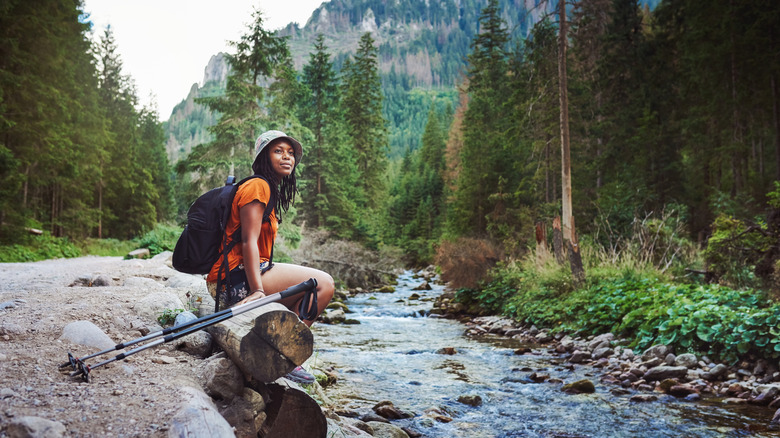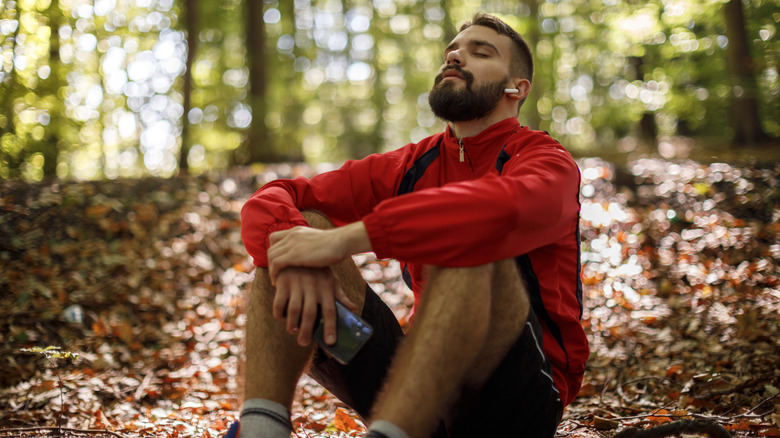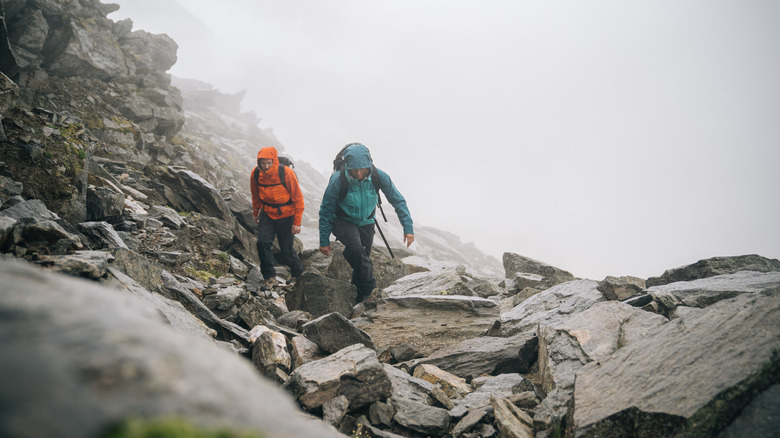Simple Tips For Keeping Yourself Calm During A Thrilling Hiking Adventure
While it is true that getting more exercise and spending time outdoors can help you de-stress and make you feel calmer, there are times when doing thrilling outdoor activities — like hiking — simply adds to your daily worries. This is especially true if the hike you are going on is particularly difficult, long, isolated, or one that takes lots of planning and preparation. These hiking adventures, while exciting, can easily cause a type of pre-trail anxiety where your brain gets stuck in a circle of "what if" scenarios. A good way to deal with this type of anxiety is to be prepared by knowing the route, carrying all necessary emergency hiking essentials, and having a plan for any dangerous possibilities like what to do if you get lost in the woods.
However, on top of pre-trail anxiety, there's also another type of hiking anxiety that can be hard to deal with because it comes as a surprise and at the worst possible time — on the trail. On-trail anxiety can be caused by a variety of triggers such as built-up work and life stress, excess pre-trek worry, fear of heights, or a variety of other factors. But, no matter the reason, feeling anxious during a hiking adventure is not fun. So, if this ever happens to you, what can you do to stay calm?
How to stay calm on the trail
If you are on the trail and feel anxiety creeping up in your mind, you can take a few steps to try and get calm again. One method that is typically recommended by healthcare professionals to help reduce anxiety is to focus on taking deep breaths and slowing your breathing. For some people it is also helpful to try belly breathing — where each deep breath causes your abdomen to expand and deflate.
If your mind won't stop racing you can try focusing on your senses. Many experts recommend trying the 5-4-3-2-1 method where you notice five objects around you, listen for four different sounds, touch three objects with different textures, notice two different smells, and (if possible) put a snack or piece of candy in your mouth so you can focus on one taste. This method can help distract your mind and force your focus away from your worries.
If you are having difficulty focusing on your senses, you can also try counting in your head. While hiking, an easy way to distract yourself is to count your steps. You can try counting to 20 and then starting all over again at one. If your anxiety is rising and you are having difficulties slowing your breathing, heart rate, and racing thoughts, it's a good idea to take a break somewhere peaceful and try the above methods again.
Know when to turn back
A very important aspect of being a successful hiker is knowing when you should push forward and when you should turn back. If your anxiety or panic attack will simply not subside and you cannot get your mind out of that anxious head space, it may be time to head back and try another day. This is especially important on challenging trails because being in a heightened state of fear is not only unenjoyable, but it can also impact your decision-making by causing you to overreact to non-threatening events or have a hard time making any decision at all.
Once you've turned back and are safely at home, you can start trying to figure out the source of your on-trail anxiety and begin to work through it. If there was a specific trigger like fear of heights, being exposed on top of a ridge, or feeling claustrophobic in a dense forest, you can try and avoid trails that have those triggering elements in the future, or expose yourself to them gradually so that you can get used to them over time. If you experience a rush of sudden panic due to built-up stress or an anxiety disorder, then you may need to take steps to treat your anxiety and manage stress levels through proven methods like meditation, therapy, or medication.


